Importance of scaffolding casters
Scaffolding casters play a vital role in the construction industry, providing mobility and versatility to scaffolding systems. These specialized casters are designed to support the weight of scaffolding structures while allowing for easy movement and repositioning on a variety of surfaces. In this comprehensive guide, we will explore the importance of scaffolding casters, their key features, benefits, applications, safety considerations, and maintenance practices.
1. Introduction to Scaffolding Casters
Scaffolding casters are an essential component of scaffolding systems, providing mobility and flexibility to construction projects. They are typically mounted at the base of scaffolding frames or towers and allow workers to move the entire structure easily across a work site. Scaffolding casters are available in various designs and configurations to suit different types of scaffolding systems and job requirements.
2. Key Features of Scaffolding Casters
* Scaffolding casters come with several key features that make them suitable for construction environments:
* Heavy-Duty Construction: Scaffolding casters are built to withstand the weight of scaffolding structures and equipment. They are typically made of durable materials such as steel or aluminum to ensure strength and stability.
* Swivel Mechanism: Most scaffolding casters are equipped with a swivel mechanism that allows for 360-degree rotation. This feature enables easy maneuverability and precise positioning of the scaffolding system.
* Locking Mechanism: To ensure safety during use, many scaffolding casters are equipped with a locking mechanism that prevents the wheels from rolling. This feature helps to stabilize the scaffolding structure when workers are climbing or working at height.
* Adjustable Height: Some height adjustable scaffolding casters come with an adjustable height feature that allows users to raise or lower the scaffolding platform to the desired level. This feature is particularly useful when working on uneven surfaces or at different heights.
* Braking System: Certain scaffolding casters are equipped with a braking system that allows users to lock the wheels in place to prevent unintended movement. This feature is essential for ensuring stability and safety during construction activities.
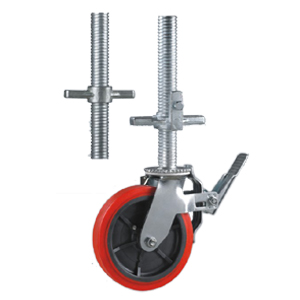
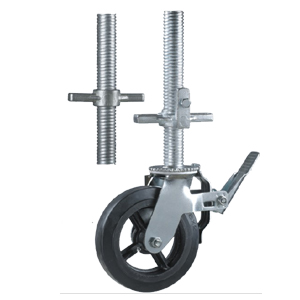
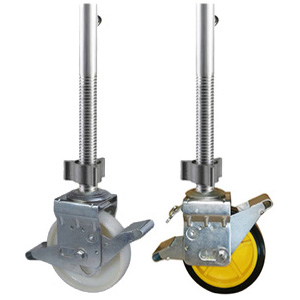
3. Benefits of Scaffolding Casters
* The use of scaffolding casters offers several benefits to construction companies and workers:
* Improved Mobility: Scaffolding casters make it easy to move scaffolding structures around a job site, allowing workers to access different areas quickly and efficiently.
*Enhanced Productivity: By eliminating the need for manual lifting and repositioning of scaffolding components, casters help to reduce downtime and increase productivity on construction projects.
*Versatility: Scaffolding casters can be used with various types of scaffolding systems, including frame scaffolding, ring lock scaffolding, and tube and clamp scaffolding. This versatility makes them suitable for a wide range of construction applications.
*Safety: The locking and braking mechanisms of scaffolding casters help to ensure the stability and safety of scaffolding structures during use. This reduces the risk of accidents and injuries on construction sites.
*Cost-Effectiveness: While initially an investment, scaffolding casters can lead to long-term cost savings by improving efficiency, reducing labor costs, and minimizing the risk of damage to scaffolding components.
4. Applications of Scaffolding Casters
* Scaffolding casters are used in a variety of construction applications, including:
* Building Construction: Scaffolding casters are commonly used in the construction of buildings and structures to provide access for workers and equipment at various heights.
* Renovation and Maintenance: During renovation and maintenance projects, scaffolding casters allow workers to easily move scaffolding structures to different areas of a building or facility.
* Industrial Projects: Scaffolding casters are also used in industrial settings, such as factories, warehouses, and manufacturing plants, to provide temporary access and support for maintenance activities.
* Events and Entertainment: In the events and entertainment industry, scaffolding casters are used to create temporary structures for stage setups, lighting rigs, and sound systems.
5. Safety Considerations for Scaffolding Caster wheels
* While scaffolding casters offer many benefits, it is essential to prioritize safety when using them on construction sites. Here are some safety considerations to keep in mind:
* Weight Capacity: Ensure that the scaffolding casters can support the weight of the scaffolding structure and any workers or equipment on it. Exceeding the weight capacity of the casters can lead to instability and accidents.
* Surface Conditions: Consider the surface conditions of the job site when using scaffolding casters. Uneven or unstable surfaces can affect the stability and maneuverability of the scaffolding structure.
* Locking Mechanism: Always engage the locking mechanism of the scaffolding casters when the structure is in use. This will prevent the wheels from rolling and help to stabilize the scaffolding during work activities.
* Regular Inspections: Inspect the scaffolding casters regularly for signs of wear, damage, or malfunction. Replace any damaged or worn casters immediately to prevent accidents and ensure the safety of workers.
* Training and Education: Provide training and education to workers on the proper use of scaffolding casters and safety procedures. Ensure that all workers are aware of the potential hazards associated with scaffolding work and how to mitigate them.
6. Maintenance Practices for Scaffolding Casters
* Proper maintenance of scaffolding casters is essential to ensure their continued performance and safety. Here are some maintenance practices to follow:
* Cleaning: Regularly clean the scaffolding casters to remove dirt, debris, and other contaminants that can affect their operation. Use a mild detergent and water to clean the casters thoroughly.
* Lubrication: Apply lubricant to the moving parts of the scaffolding casters to reduce friction and ensure smooth operation. Use a lubricant that is suitable for the specific type of caster and follow the manufacturer's recommendations.
* Inspection: Inspect the scaffolding casters regularly for signs of wear, damage, or corrosion. Pay attention to the condition of the wheels, bearings, and locking mechanisms. Replace any worn or damaged components as needed.
* Adjustment: Check the alignment and adjustment of the scaffolding casters to ensure that they are functioning correctly. Make any necessary adjustments to the height, swivel mechanism, or locking mechanism to maintain stability and safety.
* Storage: Store the scaffolding casters in a clean, dry area when not in use to prevent rust and corrosion. Avoid storing them in areas where they may be exposed to moisture or extreme temperatures.
Scaffolding casters play a crucial role in the construction industry, providing mobility, versatility, and safety to scaffolding systems. By allowing for easy movement and repositioning of scaffolding structures, casters help to improve productivity, efficiency, and worker safety on construction sites. However, it is essential to prioritize safety and follow proper maintenance practices when using scaffolding casters to ensure their continued performance and longevity. By understanding the importance of scaffolding casters and implementing appropriate safety measures and maintenance procedures, construction companies can maximize the benefits of these essential components and create safer and more efficient work environments.
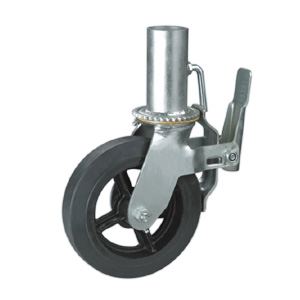
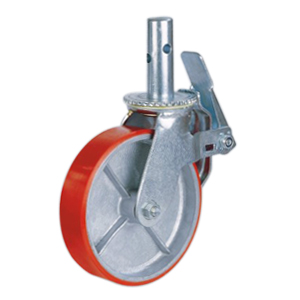
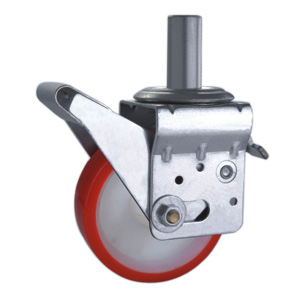
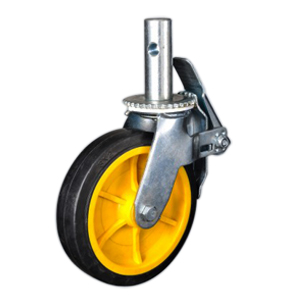

 English
English Spanish
Spanish German
German Russian
Russian Arabic
Arabic Portuguese
Portuguese Italian
Italian French
French Hebrew
Hebrew Turkish
Turkish